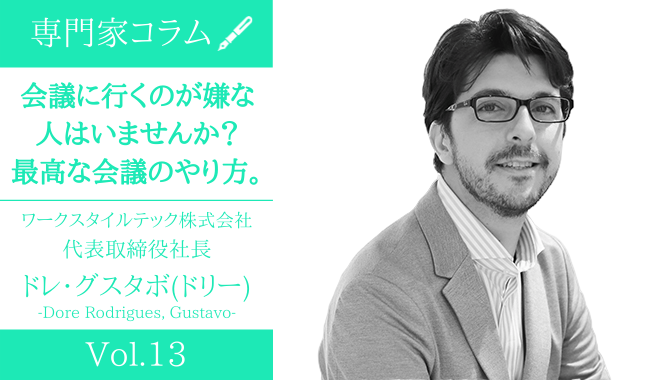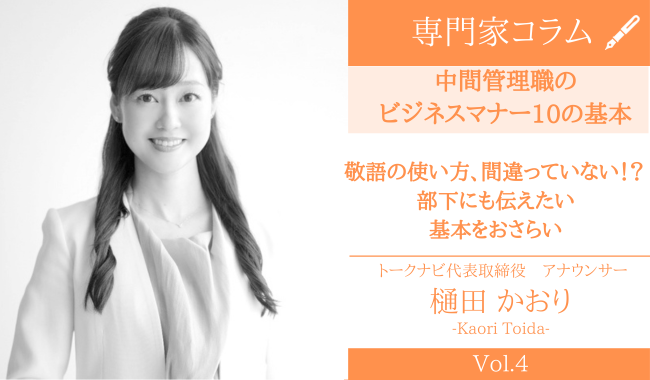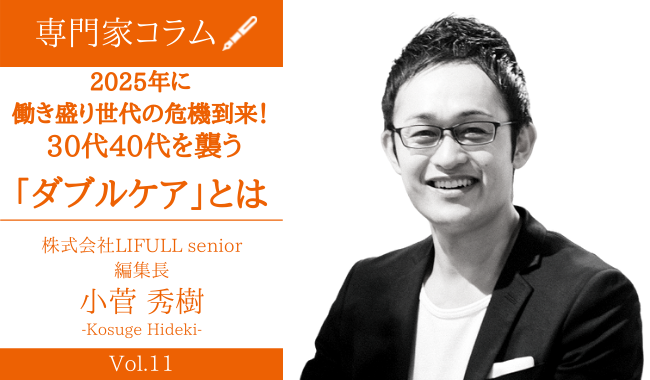会議に行くのが嫌な人はいませんか? 最高な会議のやり方。

本日最も伝えたい重要なことは、会議をどのように設計するかによって参加者の行動が決まるということです。民主的な議論と共同作業を想定して計画すれば、そのような会議になるでしょう。そのように準備しなければ、大勢が昼間から適当におしゃべりするだけのことになるかもしれませんし、数人だけが他の人々よりも大きな発言権を持つような設計になるかもしれません。
私が以前勤めていた会社には、すべてを決めるマネージャーがいたのを覚えています。会議は彼女が決めたことを共有するための場所に過ぎませんでした。私は彼女が嫌いで、自分の意見を言っては何度も喧嘩しました。それらの会議が、私が会社を辞めるきっかけの一つでした。
それだけ会議とは重要な場なのです。誰かが会社を辞めるきっかけになるかもしれませんし、逆に会社の創造性を開花させるかもしれません。ディズニーとピクサー間の会議について、私のお気に入りの話があります。2000年代初頭、ピクサーの映画は好調でしたが、ディズニーの映画はそうでもありませんでした。ピクサーはディズニーの配給から離れることにしました。ピクサーの映画は当時のディズニーの成功の大部分を担っていたので、ディズニーはそれを許すわけにはいかなかったのです。そこで彼らは交渉し、最終的にはピクサーの社長であるエド・キャットマルがディズニーとピクサーのスタジオのパートナーシップのトップになりました。
キャットマルはディズニーのミーティングに行くようになりましたが、そこで問題点に気付いたそうです。ディズニーの会議では、たった数人だけが発言権を持っていました。年上であればあるほど意見が強かったそうです。特に、『アラジン』や『ライオンキング』のように興行収入が大きな映画に参加していた場合はなおさらでした。しかしエンタメ業界では、あなたのチームが前作も同然なんですよね。そして彼らの意見は時代遅れで、観客である2000年代の子供たちにはマッチしていませんでした。
エド・キャットマルは、ディズニーとの新しいビジネスのやり方を押し付けることを望んでいませんでした。彼は、ディズニーが自分たちで問題を解決することを望んでいました。そうすれば、ピクサーのスタッフが取り締まらなくても独自の文化が定着するでしょう。そこで彼は、ディズニーのスタッフもピクサーの会議に出席するように命じました。ディズニーのスタッフは、ピクサーの会議に出席して議論を見学することは許されていましたが、発言は許されていませんでした。また、会議の後にはピクサーの誰とでも机に向かって話をすることができるようになっていました。
そこで起こっていたのは信じられないようなことでした。ピクサーの経営の秘密は会議にあったのです。彼らはプロセスの各段階に応じて異なる設計がされた会議を数種類用意しており、その中にはアイディア発表会というものがありました。アニメーターは数週間にわたってアイディアに取り組み、少人数の観客を集めて監督にプレゼンすることができました。この場合は、監督は拒否権を持っていました。同時に、すべて上映してからの反省会も行われており、その場にいる誰もが自分の意見を述べることが許されていました。席は先着順で、上級スタッフの席を指定することは許されていませんでした。社長が到着しても席が空いていない場合には、社長は立ち見をすることになっていました。これは、「この会議では誰もが発言権を持っている」という正しいメッセージを伝えることになりました。彼らはまた、アイディアのための創造的なブレーンストーミングや、配給全般のための一般的な会議も行っていました。
ポイントは、それらすべてがコラボレーションを刺激し、『カールじいさんの空飛ぶ家』や『インサイド・ヘッド』、『トイ・ストーリー』などの名作を生み出すための設計であったということです。掘り下げてみると、『メリダとおそろしの森』や『アーロと少年』についても厳しい会議が行われていたことがわかります。いくつかの会議の後に、上級スタッフが監督を変えたり、映画をより面白くするために大部分を作り直したりすることもありました。
私はしばらく会議のことを忘れていました。ワークスタイルテックではほぼ会議をしないという社風を作り、私はそれをとても誇りに思っています。私たちは大企業の半分の時間で何でもできると自信を持って言えます。大企業は残りの時間を会議に費やすでしょうから。
バーチャル会議生活は、会議のノルマを大幅に増やした気がします。肩を叩いてさっと言えばよかったことでも、今では時間を決めて正式な会議を開く必要があります。時代の反映ですね。
素晴らしい会議の基本を書き留めておきますので、ぜひ真似してみてください。
これは公式ですので、工夫する必要はありません。これでうまくいきます。
1つ目:
ピザのルールです。会議は絶対に8人以上出席してはいけません。それ以上となるとセミナーやワークショップになってしまいます。会議に6人以上参加していると、ほとんどの人が意見を出せなくなるでしょう。とにかく雑然としすぎます。
2つ目:
重要な役割を決めます。グループを導く進行役、記録を取る書記、スケジュール通りに進めるためのタイムキーパー、そして場合によってはグループがしたことを他の人々に説明するレポーター役が必要です。
3つ目:
議題の設定:
- 会議の目的
- 明確で意味のある言葉で述べること
- チームの理解と合意について確認すること
- グループの許可を得て議題を変更できるようにすること
4つ目:
アジェンダ:
- チームのアジェンダを確認すること
- 常に進捗を確認すること
- スケジュールが遅れているときはチームに合図を送ること
5つ目:
基本ルール:
- 一度に一人が話すこと
- 長話は避けること
- 「弁明ルール」を守る - 理由を説明すること(わからないと言っても大丈夫)
- 休憩後は時間通りに戻ること
- 他に追加したいルールがあるかどうかをメンバーに尋ねること。私は、個人的には、ブレーンストーミングにおいて「ダメなアイディアはない」というルールを常に加えています。
6つ目:
「駐車場」テクニック。
進行中の問題とは無関係かもしれないアイデアが提案されたとき、進行役はそれを「駐車場」に送りましょう。アイディアを無視すると、人に自分は重要でないと感じさせたり、または自分には発言権がないと感じさせます。そうなると、人はプロセスに参加する気を失ってしまいます。「駐車場」を使うことで、主な目的を見失うことなく、全員のアイディアを確認することができるようになります。
7つ目:
個性を管理する
「泣き言屋」
- 彼らの心配事を確認し、繰り返すこと
- おすすめの解決策を聞いてみること
- 関係ない場合は「駐車場」に懸念事項を追加し、後で行動計画を定めるように頼むこと。
「知ったかぶり」
- 彼らのコメントを認めること
- 他の人にコメントを求めること、場合によっては具体的に名指ししてコメントを要求すること。
- 相手に新たな発言を要求する前に、相手が「話し手」であることを認めること。
- しかし、その上で、他の人の意見も聞きたいと言ってください。
最後になりますが、最初のうちは強引で不自然に感じるかもしれないということは理解してください。ですが、大丈夫です。訓練さえすれば、完璧に使いこなせるようになるでしょう。上記のルールに従って進めると、初めての会議は多少ぎこちないものになるかもしれません。5回目の会議までには、 素晴らしい結果とともにシャープにレイヴするであろうことを保証します。それまでは、ただ信じてください。
さらに詳しく知りたい方は、私(dore@welcomehr.jp)までご連絡ください。マネージャーが優れた進行役になる方法を学ぶためのトレーニングのお役に立てるかもしれません。
Who hates going to meetings? The ultimate guide to a great meeting.
Well, it turns out that it is many people. But some meetings are exciting, fun and solve many problems. Not all meetings are bad.
The most important lesson today is that the way you design a meeting will define the participants' behavior. If you plan for democratic discussions and collaboration, that is what you get. If you don't prepare it, you might have a bunch of people talking randomly during the day, or maybe you are designing for a few people to have more voice over the others.
I remember when I was at a previous company, I had a manager that decided everything. The meeting was just a place for her to share her decisions. I hated and fought with her several times to get my voice heard. Those meetings were one of the turning points that lead me to leave the company.
That is how important meetings can be. They might make someone leave a company. They will also make a company flourish in creativity. My favorite story about meetings is the one between Disney and Pixar. In the early 2000s, Pixar movies were doing great, but Disney movies, not so much. Pixar decided to leave Disney distribution. Since most of Disney's current success was coming from Pixar movies, they could not allow it to happen. So they negotiated, and eventually, Ed Catmull, Pixar president, become the head of the Disney-Pixar studio's partnership.
He started going to meetings with Disney personal and noticed the problem. In Disney meetings, just a few people had a voice. The senior you were, the stronger your opinion was. Specially, if you had participated in a high-gross sales movie like Aladdin or Lion King. But in the entertainment industry, your team is just as good as the last movie. And their opinions were outdated and were not matching the 2000 kids' audience.
Ed Catmull did not want to impose a new way of doing business with Disney. He wanted them to figure it out by themselves. That way, the unique culture would stick without having to be policed by Pixar staff. So he ordered that the Disney staff would attend Pixar meetings. They were allowed to attend and see the discussion, but not talk. And after the meetings, they could also go to desks and talk with anyone at Pixar.
What happened was incredible. Pixar's secret of management was in their meetings. They have a few types of meetings designed differently for each stage of their process. They had Idea presentation meetings. An animator could work on an idea for a few weeks and present it to the director with a small audience. In this case, the director had veto power. At the same time, they had full screening review meetings where ANYONE in the room was allowed to voice themselves. They were not permitted to designate seats for the senior staff, first come, first served. If the president arrived and there was no seat available, he would be standing. That created just the right message regarding "everyone has a voice in this meeting." They also had creative brainstorming for ideas or the most general meetings for general distribution.
The point was that it was all design to stimulate collaboration and create masterpieces like Up!, Inside Out, Toy Story, and several others. When we dig deep, we learn that Brave and The Good Dinosaur had hard meetings too. After some of those, senior staff changed the director or recreated a big part of the movie to make it more interesting.
For a while, I forgot about meetings. At Work Style Tech, I created a company culture that does few meetings, and I am very proud of it. I can confidently say that we can do anything in half of the time of a bigger corporation, just because a bigger company will spend the rest of the time doing meetings.
At some of the companies I worked before, a designer would calculate work time as just about four productive hours a day. The other four hours would be spent on meetings with several departments.
I feel the virtual meetings life increased my meeting quota by a lot. Something that was quickly said through a tap in the shoulder now needs to be a formal meeting with a scheduled time. A reflection of the times.
I will write down the basics of any great meeting, and you can just follow. It is a formula, and we don't need to be creative about it. It works.
First:
The pizza rule. There should never be more than 8 people in a meeting. More than that is a seminar or workshop. After 6 people in a meeting, most people will not be able to have a voice. Just too much clutter.
Second:
Define key roles. There should be a facilitator, to guide the group; a writer, to take notes; a timekeeper, for keeping things on schedule; and a reporter, to explain what the group did to other people if necessary.
Third:
Set Meeting Objectives:
- Purpose of the meeting
- State in clear and meaningful terms
- Validate understanding and consensus with the team.
- Allow the meeting objective to change accounting to the group.
Fourth:
Agenda:
- Review the agenda with the team
- Constantly track progress
- Signal to the team when they are behind schedule
Fifth:
Ground Rules:
- One person speaks at a time,
- Refrain from long narratives.
- Hold to the "Justification rule" - explain why (it's okay to say I don't know)
- Return on time after breaks
- Ask people if they have any other rules that they want to include. I, personally, always include a "there is no bad idea" for brainstorming sessions.
Sixth:
Parking Lot technique.
Whenever an idea that might be unrelated to the issue at hand is proposed, the facilitator should send it to the parking lot. Ignoring the ideas will make people feel unimportant or give them the feeling that they have no voice. That will discourage them from being engaged in the process. By using the parking lot, you make sure to acknowledge everyone's ideas without losing track of your main objective.
Seventh:
Managing personalities
"The Whiner"
- Acknowledge and repeat their concern
- Ask them for a recommended solution
- Add concern to the parking lot if not relevant and ask them to define a action plan later.
"The know it all"
- Acknowledge their comment
- Ask for other people's comments, possibly even specifically request comments by name.
- Acknowledge that they are a "talker" before requesting new remarks from them.
- But then say you'd like to hear from others too.
By the end, I want you to understand that it all might seem forced and unnatural in the beginning. But that is okay. Just practice will lead to perfection. The first meetings you facilitate with those rules above might be a little clumsy. By the 5th meeting, I guarantee you that you are going to be sharp and lave with excellent results. Just believe in the process.
If you want to know more, please contact me at dore@welcomehr.jp, and we might help to train your managers to learn how to be excellent facilitators.

 ツイート
ツイート

 シェアする
シェアする







